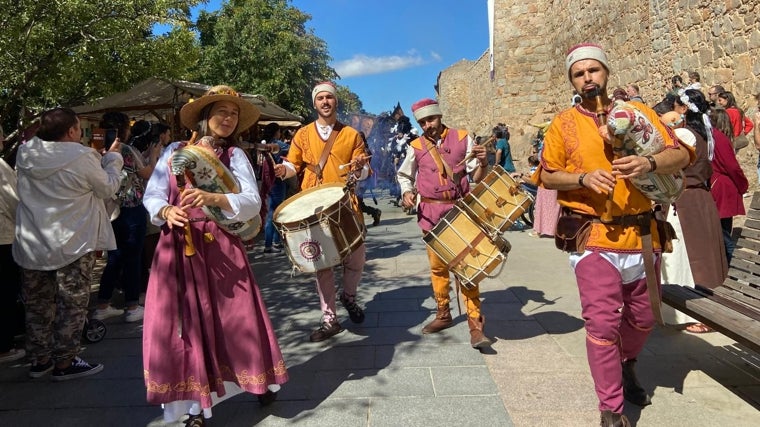Medieval Days in Ávila: The city returns to the Middle Ages this weekend

Ávila travels back in time this first weekend in September. As every year, the city's Medieval Days attract numerous tourists and onlookers. And no wonder, as these festivals are of National Tourist Interest (2023) and the main event in the city's annual tourist calendar, both for the number of visitors and the logistical and personnel deployment involved, as well as the economic boost for Ávila's hospitality, hotel, and commercial sectors.
The city's historic center is the perfect setting for the 28th edition of Ávila's Medieval Days , featuring more than 150 activities and 300 craft and food stalls spread across San Segundo Street and the Corral de Campanas and Adolfo Suárez squares. There's a children's area, a falconry exhibition and display, craft workshops, and medieval tournaments, as well as an exhibition of period costumes. Every day, the market area provides plenty of entertainment with fantastical characters and mythological beings, musicians and Arabic dancers, parades, circus and fire shows, stilt walkers, and storytellers.
 Image of the animation on the streets last year
ÁVILA CITY COUNCIL
Image of the animation on the streets last year
ÁVILA CITY COUNCIL
But events don't just take place within the walls. The event is also held outside the walled enclosure, as spaces have been expanded . The Plazas of San Vicente, Italia, and Nalvillos, and the slope of the northern stretch of the wall, are part of the events for the first time this year. These spaces complement the existing market squares, such as the Mercado Chico, Corral de Campanas, La Santa, Pedro Dávila, Teniente Arévalo, Adolfo Suárez, Catedral, and Fuente el Sol squares. Likewise, the gardens of San Vicente and El Rastro are also part of the event, as well as the atrium of San Isidro, an emblematic space for medieval jousting, and palaces such as Superunda and Los Verdugo.
An English camp has been set up on the slope of the northern section of the wall, emerging through the Arco del Carmen, while workshops and a Spanish camp are being held in the Plazas de Italia and Nalvillos. Meanwhile, the Atrium of San Isidro will feature around twenty demonstrations between Friday and Sunday, including falconry displays and horseback riding tournaments.
The Mercado Grande is one of the main venues for the Medieval Days of Ávila , where around twenty shows (puppets, dance, music, concerts and cold fire shows) will take place, while in the San Vicente gardens there will be more than 40 activities including games, puppets, an archery camp, magic and various exhibitions.
The Superunda Palace houses an exhibition dedicated to medieval clothing and attire, while the Los Verdugo Palace has installed an exhibition featuring the best images from the previous edition of the Conference. And, as usual, a falconry exhibition is located in the Rastro garden.
 Image from the 2018 Ávila Medieval Festival, 'The Market of the Three Cultures'
Ricardo Muñoz
Image from the 2018 Ávila Medieval Festival, 'The Market of the Three Cultures'
Ricardo Muñoz
In addition to all this, there are 20 parades, reenactments, and street parades. As a new feature, every day, at the end of the day, there will be a grand parade that will close each day of the market. The main events are a giant elephant, which will parade along San Segundo Street and Paseo del Rastro; and a large articulated puppet in the shape of a phoenix.
These parades will take place both in the morning and afternoon, while the Grand Parade of the Three Cultures will be held on Saturday starting at noon at the Mercado Chico.
The event concludes with concerts by local artists on the front esplanade of the Lienzo Norte starting at midnight.
The Medieval Days of Ávila – The Market of the Three Cultures is the full name of the festival that refers to and highlights the peaceful coexistence that existed in the city between Christians, Muslims, and Jews in the Middle Ages .
The first modest medieval market was born in 1997 in the city's historic center, a site declared a World Heritage Site in 1985. It was located only around the Mercado Chico and the nearby streets, but careful decoration, along with the liveliness and participation of citizens and hoteliers, unwittingly sowed the seed of a Festival of National Tourist Interest.
The objective of this event was to commemorate and portray the merchants of the period, something that has continued uninterruptedly until this 28th edition. Therefore, part of the urban area, including the walls, is decorated in accordance with the medieval representation.
ABC.es




